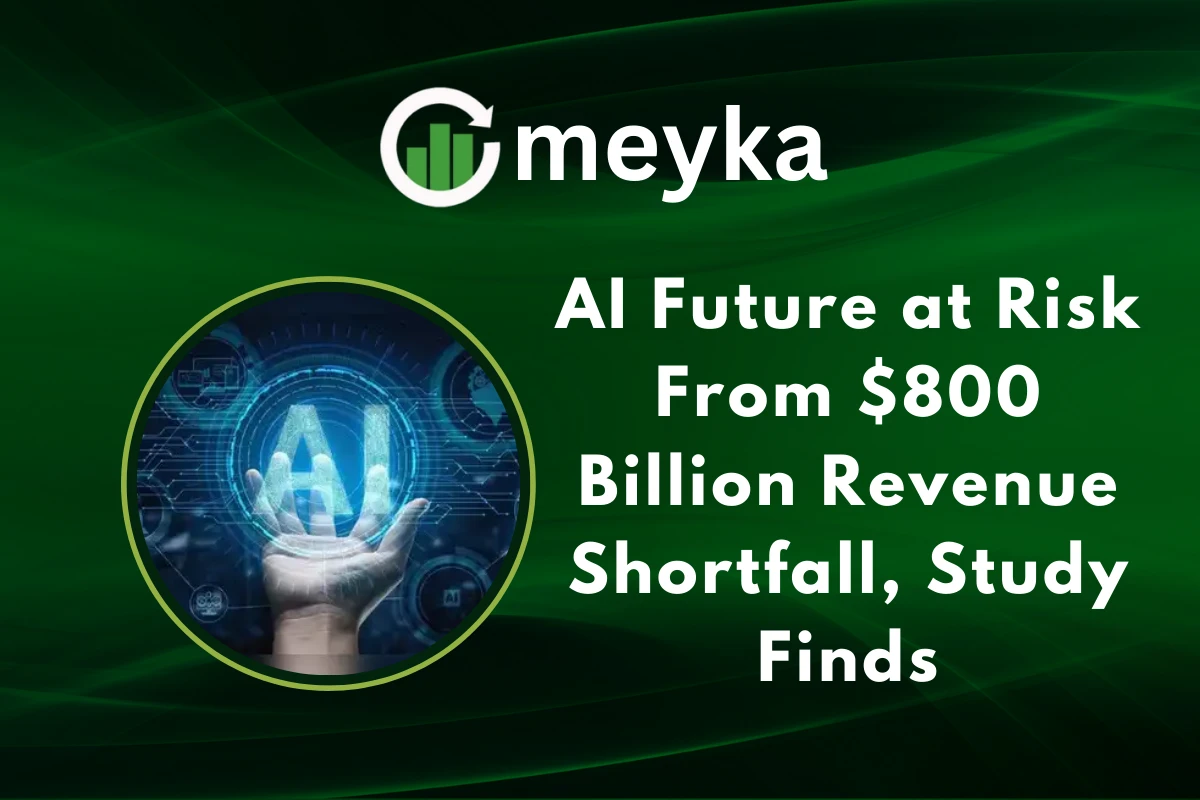AI Future at Risk From $800 Billion Revenue Shortfall, Study Finds
A new Bain & Company analysis warns that the AI Future could be constrained by a large funding gap. Bain says the world will need about $2 trillion in annual revenue by 2030 to fund the compute and data center capacity that AI demand requires.
Yet the firm estimates an $800 billion shortfall between what AI firms can likely earn and what they must spend to keep systems running at scale. That mismatch matters because compute, power, chips, and storage are costly and rising fast, and monetization lags behind usage growth.
Why is the AI future under threat? Because compute and infrastructure growth are outpacing companies’ ability to turn AI usage into revenue.
H2: Why the AI Future Faces a $800 Billion Gap
Bain’s report shows a fundamental mismatch. Customers and platforms are using AI more. That drives huge inference and training loads, but revenues from those services are not yet large enough. Bain models a future where AI compute demand could reach about 200 gigawatts of incremental power by 2030, with the United States using roughly half of that.
The firm warns that even aggressive efficiency gains will not close the gap without much higher revenues or fresh capital flows.
Where the costs stack up
Compute power, specialized chips, storage capacity, and networking all add to capital and operating costs. Data centers need power upgrades and grid investments. That raises both capex and energy bills.
Bain calls for roughly $500 billion in capital expenditures and about $2 trillion in revenue to make the math work.
What would a shortfall mean in practice? It could slow model training, limit deployment, raise prices, and shift where AI is built and used.
The Scale of Investment Needed for AI Growth
Bain’s numbers are stark: the world needs a massive revenue base to fund the next wave of AI. Achieving that revenue depends on firms turning research into paid services, and on businesses integrating AI into core workflows that create measurable value.
The report says part of the solution is revenue reallocation, for example, moving on-prem budgets to cloud and reinvesting savings into compute. Still, that reallocation alone is insufficient to cover the full gap.
Who is best positioned
Large cloud players and chip firms are central to the outcome. Companies like NVIDIA, Microsoft, and Oracle are already scaling infrastructure, partnerships, and product lines to meet demand.
Their investments, partnerships, and pricing will shape whether the industry can monetize AI at scale. Analysts say execution and market adoption will matter most.
Can big firms bridge the gap alone? No, it will take broad commercial adoption, new revenue models, and likely public policy support.
AI Future and Its Dependence on Data Centers
AI’s growth is tightly linked to data center capacity. Training giant models consumes large blocks of compute, while inference creates a steady, high-volume load. That drives demand for GPUs, accelerators, and power-hungry infrastructure.
The Bain analysis highlights how energy, racks, and cooling add up quickly. Investors and operators are tracking these metrics closely. AI stock research teams are already mapping compute pipelines to revenue forecasts to spot bottlenecks.
Inference is the new frontier
Training receives attention, but Bain emphasizes inference as the production layer that will drive long-run demand and costs. Firms must optimize latency, cost per query, and distribution, or face unsustainable margins.
Why does inference matter more now? Because millions to billions of daily inference events scale costs faster than many companies can monetize them.
Investor Reactions and Market Risks for the AI Future
Markets reacted to the report with a mix of caution and recalibration. Forums and investor threads debated whether valuations already price in the capital needs. Analysts flagged risks around overbuild and underbuild, supply chain strain, and grid constraints.
Social discussion, including active threads on investor Reddit, shows retail and institutional interest in pricing these risks into shares tied to AI infrastructure. Analysts are using AI stock analysis frameworks to stress test earnings and cash flow under various deployment scenarios.
Are stocks vulnerable to this shortfall? Yes, particularly firms with high capital intensity or weak routes to monetize AI services.
Is the AI Boom Sustainable for the AI Future
There are two big threats to sustainability. One is financing, the other is returns. If revenue models lag forever, capital fatigue could set in. Some observers warn that tech spending may be parabolic unless returns improve. Companies and governments must avoid overbuilding capacity that sits idle or underbuilding and choking innovation.
In public debates, commentators are already weighing parallels to past tech cycles. For equity investors, the term AI stock is now being evaluated not just for growth potential, but for the durability of cash flows needed to support continued buildouts.
Could spending slow AI progress? Yes, if funding stalls, fewer large models will be trained, and some projects will be delayed. That would slow the deployment of advanced AI features across industries.
Global Implications for the AI Future
The shortfall has geopolitical and policy consequences. The U.S., Europe, and Asia all face choices on energy grids, export controls, and sovereign capacity. Bain warns of an arms race dynamic, where nations push local capacity for strategic reasons, which could fragment supply chains and raise costs.
Governments may need to consider incentives, grid upgrades, and public-private partnerships to close gaps.
Will regulation help or hurt? It depends. Smart policy can unlock investment and grid resilience, while heavy-handed rules could slow commercialization.
What Experts Say About the AI Future
Bain stresses the urgency of aligning revenue models with infrastructure needs. Analysts at market research firms and financial outlets echoed the point, noting that without clearer monetization, compute spending could outpace returns.
The consensus view is that innovation in pricing, platform economics, and hardware efficiency will be critical. Partnerships across cloud, chip, and enterprise vendors will determine whether the AI Future becomes self-sustaining or capital-constrained.
What is the path forward? Greater enterprise adoption, creative pricing, efficiency gains, and coordinated investment can narrow the gap. Collaboration between the private and public sectors will also be essential.
Conclusion
Bain’s estimate of an $800 billion revenue shortfall is a clear wake up call. It shows that demand alone does not guarantee sustainable AI growth. The industry needs deeper revenue models, smarter infrastructure spending, and broader policy support to fund the compute that will power tomorrow’s models.
The coming years will test whether technology leaders, investors, and governments can align incentives and capital to secure a robust AI Future.
FAQ’S
The AI Future is under pressure because infrastructure costs for data centers, chips, and cloud services are rising faster than AI revenue growth.
Bain & Company estimates around $2 trillion in new annual revenue will be needed to meet AI demand and prevent bottlenecks by 2030.
Data centers are critical because they provide the compute power and storage needed to run generative AI models, training, and large-scale inference.
Yes, analysts warn that overspending on infrastructure without matching revenue could create risks similar to the dot-com bubble, slowing AI growth.
Leaders like Nvidia, Microsoft, Oracle, and cloud providers are central since they supply chips, infrastructure, and platforms powering global AI demand.
Disclaimer
This content is made for learning only. It is not meant to give financial advice. Always check the facts yourself. Financial decisions need detailed research.






